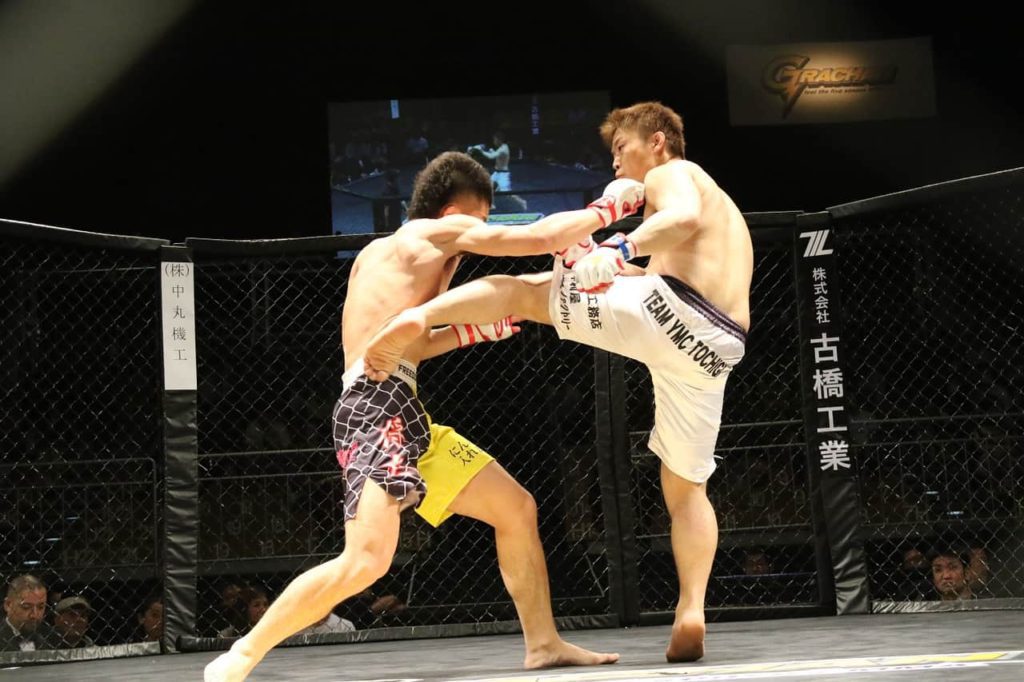MMA as we know it is a relatively new sport. Especially if you compare it to the long history other combat sports have such as boxing and wrestling. MMA only started to become mainstream after the very first UFC event, UFC 1. If you watched UFC 1 today, you’d think it was a totally different sport.
Since 2002, the average fight time in MMA in the UFC has increased by 32% with average fight time decreasing linearly from the lightest women’s weight class to the men’s heavyweight class. Stylistically, MMA has progressed from squaring off opponents of different martial arts (e.g. BJJ and boxing) to all fighters having skills from both striking and grappling arts.
For those who watch their fair share of MMA, you may have noticed various techniques that have made their way into professional MMA and the UFC. As the sport grows, so will how the sport is performed. So how has the sport changed over the years?
How Has The UFC Evolved Over Time?
MMA Style
The early UFC had opponents from different martial arts disciplines face off to see which martial art was the most dominant. It was performed in a tournament format with the winning fighter progressing forward to the next round. The winner was the one that won all of their fights that evening.
This is what put Brazilian Jiu-Jitsu on the map when Royce Gracie won UFC 1 in his gi defeating opponents far bigger than him. At that time, the ground game wasn’t mainstream so many fighters did not know about how effective a skinny guy in a gi could be.
As MMA and the UFC evolved, fighters started developing their martial arts skills over many disciplines. Rather than having Mixed Martial Arts mean that there are many fighters from different martial arts backgrounds, it gradually progressed to meaning that each fighter possessed a mix of martial arts skills and techniques in their arsenal.
In the earlier days, fighters could train the specific martial arts disciplines such as kickboxing and BJJ and have the necessary ability to compete at the UFC level. Nowadays, MMA is a martial art of its own.
While training the pure striking and grappling disciplines are obviously important and will help develop MMA technical skills, there are subtle technical differences when fighting MMA and other scenarios that aren’t present in other martial arts.

How to Dominate Every Fight with Raw, Explosive Power No One Can Match
Discover the underground blueprint that has quietly turned MMA hopefuls into legends, using nothing but sheer, brute force and bulletproof conditioning techniques.
For example, clinching against the cage is a skill-specific to MMA. Grappling and striking have also both been adapted to MMA. When boxing, weight distribution is generally more forward on the front foot. If this is the stance taken in MMA, it leaves you open for takedowns.
When grappling, being in an opponent’s guard is generally deemed as an advantageous position as you’re able to strike and you own top position. In BJJ, being in an opponent’s guard is generally a defensive position where you have to pass in order to have points and submission options.
Currently, finishes in fights are predominantly from punches except for the women’s strawweight class [1]. The dominance of grapplers are slowly losing out to dominant strikers that possess strong takedown defense and the ability to escape being on their back. 72% of the top 5 key performance indicators for fight success are related to striking techniques across all weight classes.
Fight Duration
Since 2002, the average UFC fight has increased by 2:37 minutes which is a 32% increase. Fights now average close to 11 minutes in duration whereas back in 2002, fights averaged 8 minutes [1]. There are many potential reasons for this such as fighters developing better defensive techniques and referees standing fighters up more often.
If we look at it by weight class, women’s straw weight have the longest average fight length at 12:35 minutes while heavy weights have an average fight time of 8:02 minutes. The shorter fight time seen in heavy weights is likely due to their 60% KO/TKO percentage [1]. The highest out of any of the weight classes.
Work Rate

In 2002, an average of 4 strikes were thrown per minute in UFC fights. Now, UFC fights average double that at 8.5 strikes per minute [1]. Fighters are able to maintain a higher work rate and output for longer.
Is MMA And The UFC The Same?
MMA and the UFC are not the same. MMA is the sport that is short for Mixed Martial Arts. The UFC which is short for the Ultimate Fighting Championship is an organization that organizes professional MMA bouts with their contracted professional fighters. There are many organizations that organize professional MMA fights such as Bellator and ONE Championship.
What Is In The Future For MMA?
As MMA continues to evolve, it seems there is a trend to favor striking over grappling. With the majority of the key performance indicators for winning fights coming from striking techniques, this likely isn’t going to change and may even increase further as fighters are separated from the cage or stood up from the ground quicker.
The fact that MMA always starts from a standing position means striking will likely always have a large influence on fight outcome. As fighters come through using successful techniques, they will become adopted throughout MMA. Calf kicks seem to be in vogue currently in the UFC and may or may not continue in the years to come.
When MMA wasn’t as mainstream, you would have to train each martial arts discipline separately. With young fighters training now, they can train specifically for MMA at an MMA gym. Since this is such a new concept to MMA, there will be the continued evolution of the MMA fight game.
References
1. UFCPI “A Cross Sectional Analysis And Projection Of The UFC Athlete”

